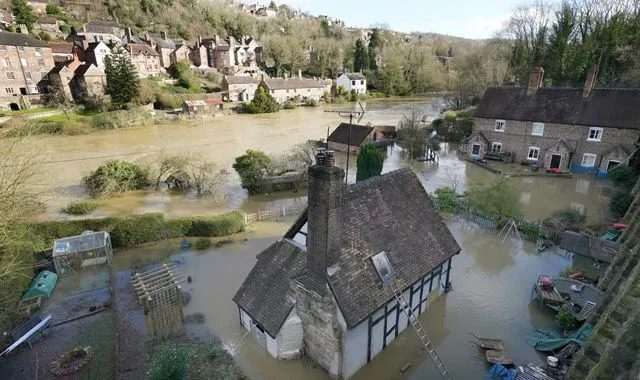Tue, 7 March 2023

Damage inflicted by flooding can be reduced if countries keep their internationally agreed promises on tackling climate change, according to a new study.
But the paper warned the UK is still facing some increase in damages even if the world limits warming to around 1.8C above pre-industrial levels, slightly warmer than the global target of 1.5C.
Current policies in place around the world put the planet on course for around 2.7°C of warming.
This is significant progress since the landmark Paris climate agreement, but the higher temperatures would still be expected to inflict harsh consequences for food production, glacier melt, drinking water and hot and humid cities.
Researchers from the University of Bristol and flood modelling firm Fathom assessed the UK's flood risk using the latest projections from the Met Office.
They found that damage levels could be curbed to just 5% above historical levels, but only if countries honour the pledges they made at the Cop26 climate conference in Glasgow and additional net zero by 2050 targets.
Professor Paul Bates, lead author of the study and chairman of Fathom, said: "For the first time this flood model gives us a more accurate and detailed picture of the impact of climate change on the risk of flooding in the future across the UK.
"The results are a timely warning to the country's political leaders and business sector that global commitments to significantly reduce carbon emissions must be taken very seriously, and ultimately take effect, in order to mitigate increased losses due to flooding."
Official flooding maps, which inform defence investment policy and long-term risk planning, lack transparency and are not peer-reviewed, the researchers warned.
They described them as "insufficiently validated", with the methods used to create them "clouded in secrecy" and unrepeatable.
Failing to open up assessments to peer review left Britons missing out on more accurate information about the risks, they said.
The paper is just the latest of many to warn the UK "is not well adapted to the flood risks it currently faces, let alone any further increases in risk due climate change".
Last year the government's own climate advisors, the CCC, warned the number of England's properties at risk of flooding from heavy rainfall was likely double in the next 30 years without dramatic action from government.
"Current expected annual damages of [around] £700m are a drain on the economy, but more importantly this represents a very considerable sum of misery for those who are affected," the authors of today's paper said.
Which parts of the UK are worst affected by flooding?
The data also showed regional differences in potential flood damage which hold true even if the average global temperature was limited to 1.8C above pre-industrial levels - slightly above the internationally agreed limit of 1.5C.
South-east England, South Wales, north-west England and central Scotland face the greatest risk, with densely populated cities such as London, Cardiff, Manchester, Glasgow and Edinburgh looking at possible damage increases of more than 25%.
North-east and central England as well as northern Scotland would face around the same level of flood damage as they do today.
Prof Bates added: "We found that flooding increases most in places where risk is already high now, so the best thing we can do to prepare for the impact of climate change is to strengthen flood management in currently at-risk areas, and this will bring immediate economic and social benefits as well."
Kamil Kluza, co-founder of risk analytics provider Climate X said it is important to measure future flooding risk in the UK, "but it's not the only risk to consider".
"Our data shows that by 2050, inland flooding will contribute to 50% of insurance losses - the other 50% will be caused by a combination of winds, subsidence and sea level rise."
The study also pointed out the quality of information produced by each of the UK's four countries varied, with Northern Ireland, Wales and Scotland trailing behind England.
It was published in the journal Natural Hazards and Earth System Sciences and was based on actual river flow, rainfall and tide-surge observations as well as climate model projections that matched with data on flood losses from the Association of British Insurers.
No comments:
Post a Comment